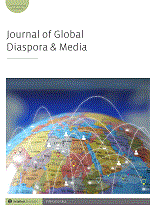
Full text loading...

This is a commentary to the Special Issue ‘Textures of Diaspora and (Post-) Digitality: A Cultural Studies Approach’, edited by Shola Adenekan, Julia Borst and Linda Maeding. The commentary reflects on digital diaspora as a travelling concept, and considers the analytic scope of the terms post-migration, post-digital and post-global for digital diasporas studies. I argue digital diaspora studies can be situated in the following continuums: universal-particular, decentring–recentering, global–local, inclusion and exclusion as well as media-centrism and non-media-centrism. Future scholarship may listen better to the sounds of digital diasporas and attend to the implications of digital platformization.

Article metrics loading...

Full text loading...
References


Publication Date:
https://doi.org/10.1386/gdm_00029_1 Published content will be available immediately after check-out or when it is released in case of a pre-order. Please make sure to be logged in to see all available purchase options.